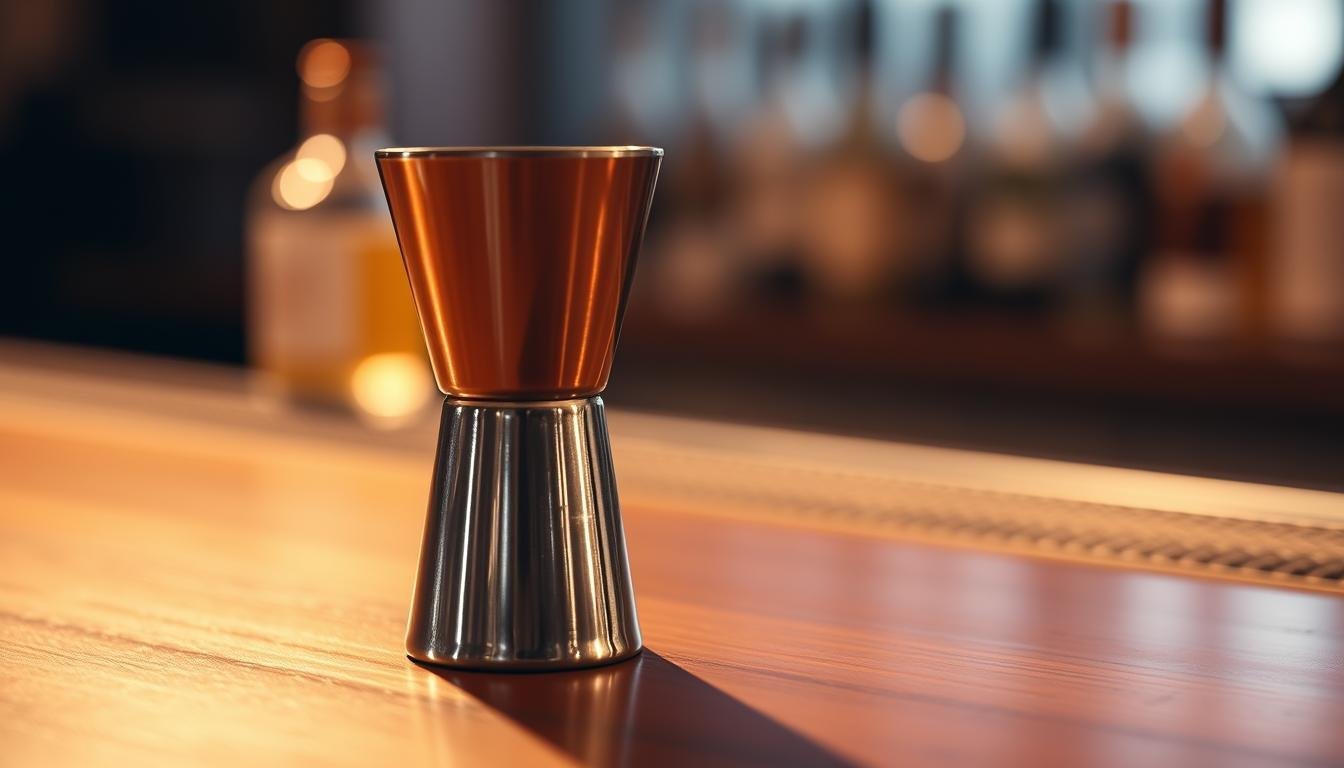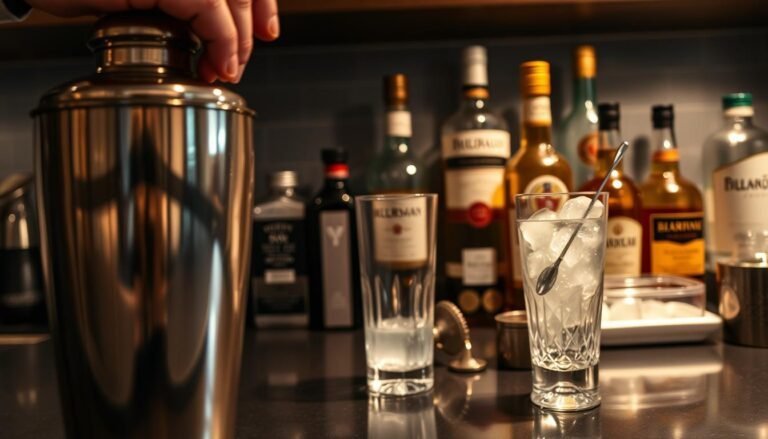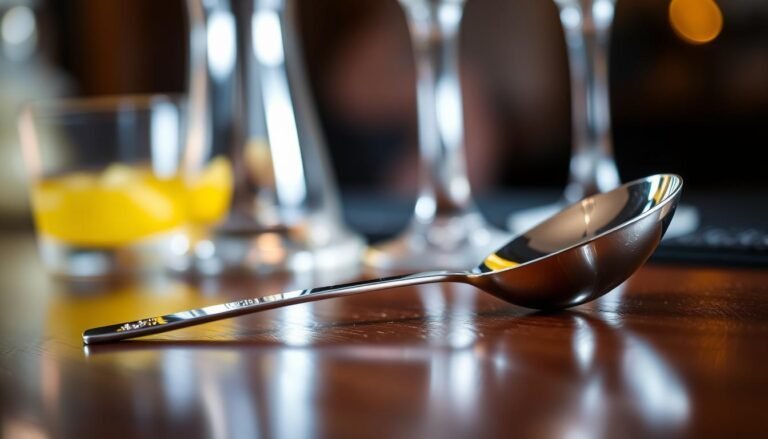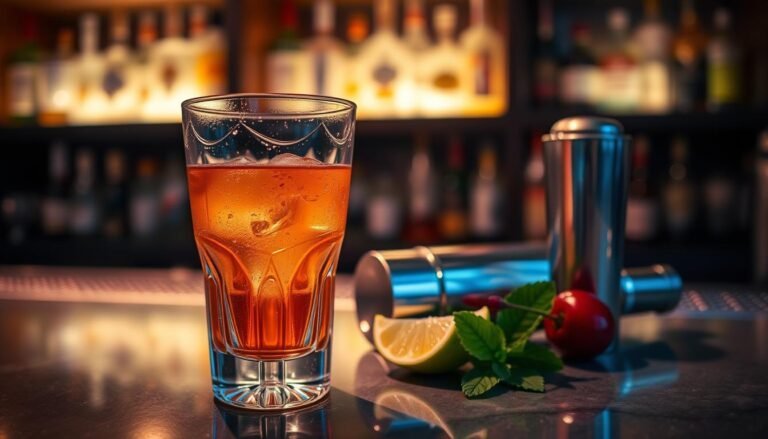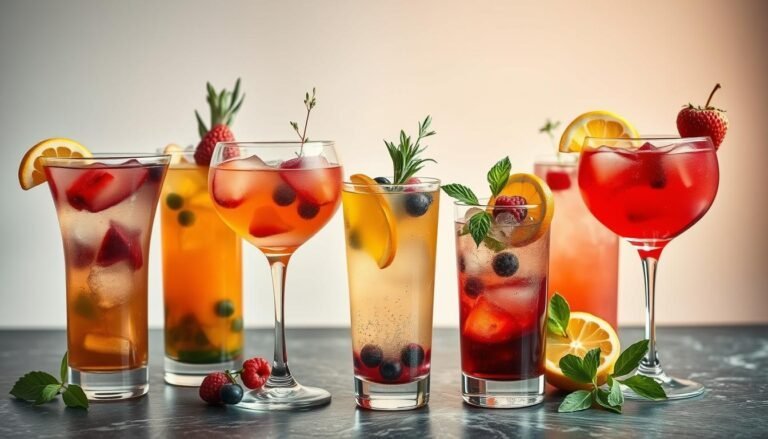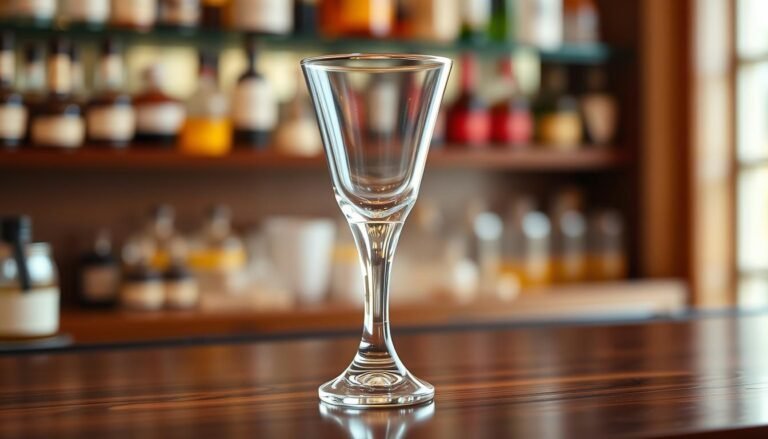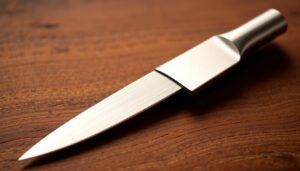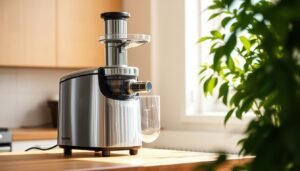Disclosure: This Post Contains Affiliate Links; We earn a commission on purchases.
Making the perfect cocktail needs precision and consistency. These are key for both pro bartenders and hobbyists. A jigger is a must-have for getting the liquor pour just right.
Knowing how to use a jigger well is very important in mixology. It affects the drink’s balance and taste. With a jigger, bartenders can keep their drinks consistent, which is vital for top-notch cocktails.
Getting the measurements right in cocktail making is super important. A jigger helps get consistent results. It’s a must-have for anyone serious about making great drinks.
Key Takeaways
- Precision is key for balanced flavors in cocktails.
- A jigger is a basic tool for accurate measurements.
- Keeping drinks consistent improves cocktail quality.
- Using a jigger ensures uniformity in different cocktails.
- A jigger is a must for both pro bartenders and hobbyists.
What Is a Jigger and Why It Matters in Cocktail Making
The jigger is a key tool for bartenders. It has a long history in mixology. It started in different places, possibly linked to the British Navy or “thingamajig.” By the late 19th century, it became a standard in bartending.
Definition and History of the Jigger
A cocktail jigger is a measuring cup for liquor. It changed from sherry glasses to metal jiggers. This change made cocktail making more precise.
The Importance of Precise Measurements in Cocktails
Using a bartending jigger keeps cocktails consistent. Here’s why precise measurements are important:
- Balances flavors
- Maintains recipe integrity
- Enhances customer experience
Knowing how a jigger works helps bartenders improve. It makes sure every cocktail is perfect.
Types of Jiggers and Their Measurements
Jiggers are key for measuring liquor pours. They come in many styles and sizes. This variety meets the needs of both professional bartenders and home mixologists.
Standard Jigger Sizes and Capacities
Jiggers have different sizes, like 1 oz and 2 oz. Some have multiple measurements for more flexibility. These sizes help bartenders pour liquor accurately, keeping cocktails consistent.
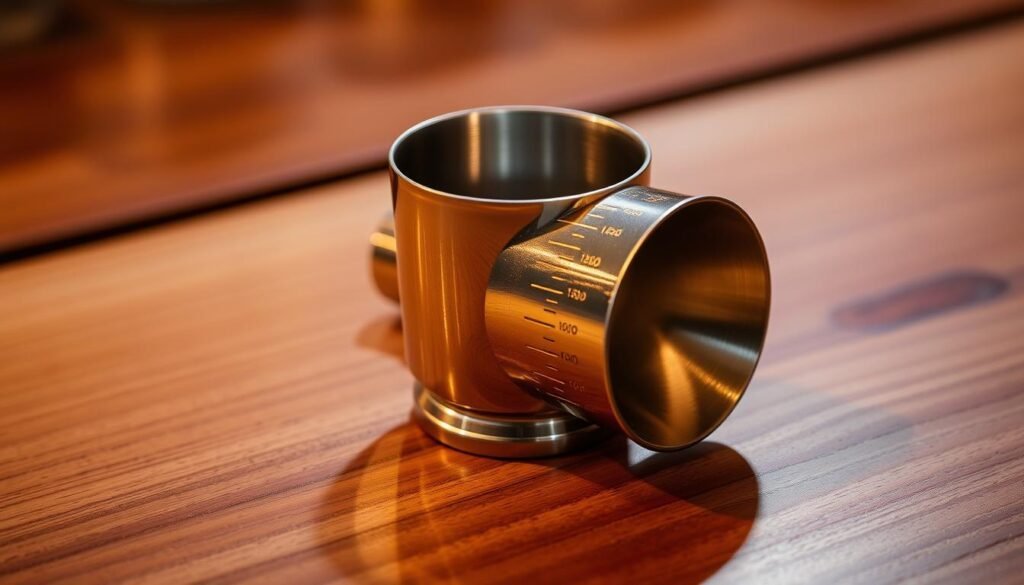
Different Jigger Styles and Materials
The material and design of a jigger matter a lot. Stainless steel jiggers resist corrosion well. Copper jiggers are great for heat transfer. Glass jiggers are non-reactive and look good.
Japanese vs. American Jiggers
Japanese jiggers are tall and narrow for precise pouring. American jiggers are sturdier and might have double sides. Knowing these differences helps pick the right jigger.
Double-Sided vs. Single-Sided Jiggers
Double-sided jiggers have two measurements in one. They’re handy but might be more complex. Single-sided jiggers are simple and easy to use.
The Proper Technique for Using a Jigger
Learning to use a jigger is key for making perfect cocktails. A jigger is simple, but it works best when used right.
How to Hold a Jigger Correctly
First, learn how to hold a jigger. Hold it firmly but not too hard. Place your thumb and index finger on the handle or body, depending on the design.
The Pour Technique for Accuracy
The pour technique is vital for accuracy. Hold the jigger over the shaker or glass and tilt it slowly. Make sure the liquid hits the right level.
Filling to the Proper Level
It’s important to fill the jigger to the right level. Pour until the liquid hits the marked line. Remember, the curve of the liquid’s surface matters too.
Avoiding Spillage and Waste
Spillage is a big no-no when using a jigger. Pour slowly and steadily. Hold the jigger right over the shaker or glass to avoid spills.
Mastering the jigger technique is essential. It helps bartenders make cocktails that are always balanced and tasty.
Understanding Jigger Measurements and Conversions
To make perfect cocktails, knowing jigger measurements is key. Bartenders and mixologists use this knowledge to follow recipes and try new things.
Standard Measurement Units
Cocktail recipes use different units like ounces (oz), milliliters (ml), and parts. A standard jigger has 1.5 oz (44.36 ml) on one side and 0.75 oz (22.18 ml) on the other. Sizes can vary, though.
Converting Between Different Measurement Systems
Converting measurements is easy with the right factors. For example, to change ounces to milliliters, multiply by 29.5735. So, 1 oz is about 29.57 ml.
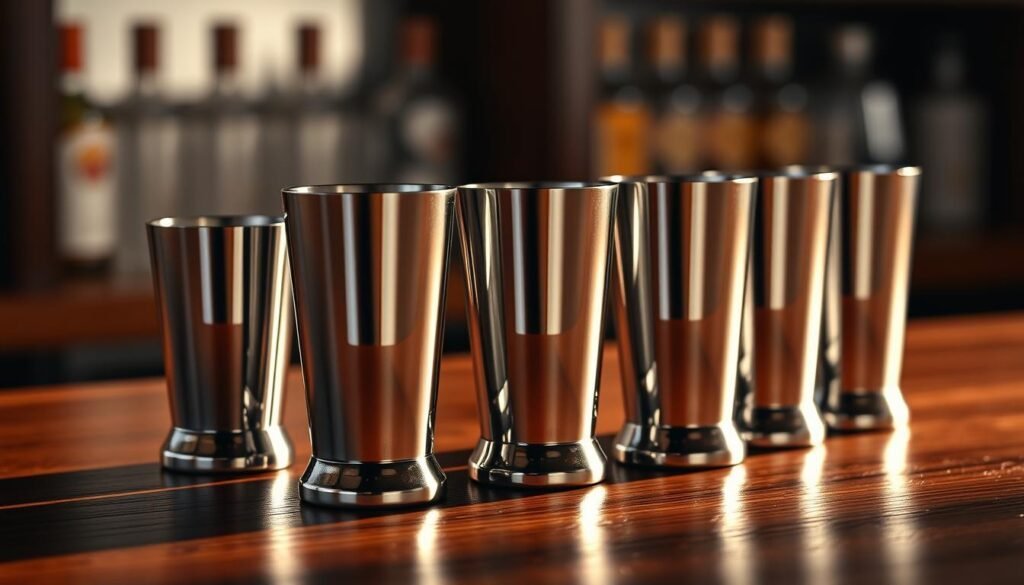
Reading Jigger Markings and Indicators
Jiggers have markings for different measurements. It’s important to read these markings well for accurate cocktail making.
Common Measurement Equivalents for Cocktails
- 1 oz = 29.57 ml
- 0.5 oz = 14.79 ml
- 1.5 oz = 44.36 ml
Knowing these equivalents is vital for mastering jigger cocktail recipes. It helps keep your mixology consistent.
Common Mistakes When Using a Jigger and How to Fix Them
The jigger is a simple bar tool that needs technique. Many bartenders, new and old, make common mistakes. These mistakes can ruin the taste of their cocktails.
Overfilling or Underfilling
One big mistake is filling the jigger too much or too little. This makes drinks too strong or too weak. To fix this, always fill the jigger right to the top. Using a measuring tool like a jigger needs careful attention.
Inconsistent Pouring Technique
Pouring unevenly can also mess up the drink’s strength. It’s important to pour smoothly and evenly. This makes sure every drink tastes the same.
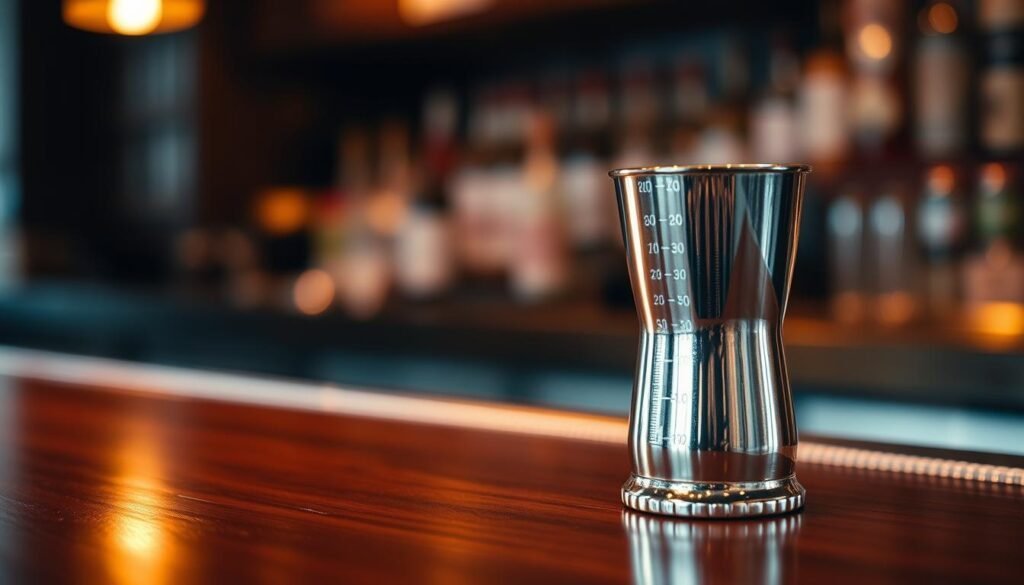
Ignoring the Meniscus
Not paying attention to the meniscus can lead to wrong measurements. To measure right, the liquid should be even with the jigger’s mark.
Troubleshooting Measurement Problems
If you’re having trouble with measurements, check your jigger. Make sure it’s clean and free of dirt. Also, make sure you’re seeing the meniscus right. Try practicing with different liquids to get better.
Knowing these common mistakes and fixing them can make bartenders better. This way, every cocktail they serve will be perfect.
Classic Cocktail Recipes Using Jigger Measurements
Classic cocktails need the right mix, and a jigger makes sure of it. Whether you’re a pro bartender or just starting, a jigger keeps your drinks perfect.
Martini Measurements
A classic Martini needs 2 oz of gin and 0.5 oz of dry vermouth. A jigger lets you measure these exactly. Add an olive or lemon twist for the final touch.
Old Fashioned Proportions
An Old Fashioned has 2 oz of bourbon or rye whiskey, 1 sugar cube (about 0.5 oz), and 2 dashes of Angostura bitters. The jigger makes sure it’s just right, not too strong or weak.
Margarita and Daiquiri Ratios
For a Margarita, mix 2 oz of tequila, 1 oz of lime juice, and 0.5 oz of triple sec. A Daiquiri needs 2 oz of white rum and 1 oz of lime juice. A jigger keeps these flavors in check.
Balanced Proportions for Signature Drinks
Creating unique cocktails means playing with ratios and ingredients. A jigger lets you fine-tune your drinks. For instance, you can tweak a Daiquiri’s mix.
Conclusion: Mastering the Jigger for Cocktail Perfection
Learning to use a jigger is vital for making perfect cocktails. A bartending jigger is a must-have tool. It helps bartenders make every drink just right.
Knowing about different jiggers and how to use them is important. Bartenders can make many classic cocktails well. Drinks like the Martini and Old Fashioned need exact measurements for the right taste.
With practice, bartenders get better at making great cocktails. Using a jigger makes sure every drink is made carefully. This leads to happy customers.
Whether you’re new or experienced, learning to use a jigger is important. It helps you make tasty and consistent cocktails. Your drinks will impress everyone.
FAQ
What is the standard size of a jigger?
How do I measure cocktails accurately with a jigger?
What is the difference between a Japanese-style jigger and an American-style jigger?
Can I use a jigger to measure milliliters?
How do I clean and maintain my jigger?
What are some common mistakes to avoid when using a jigger?
Can I use a jigger to make large quantities of cocktails?
Are there different types of jiggers for specific tasks?

From refreshing non-alcoholic sips to simple cocktails anyone can make, Ryan’s goal is to help you pour great drinks without the guesswork. Whether you’re hosting a party or just want something quick and tasty, Ryan’s practical tips make mixing drinks fun, fast, and stress-free.
Subscribe to Our Newsletter

